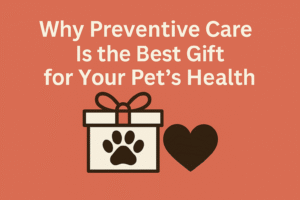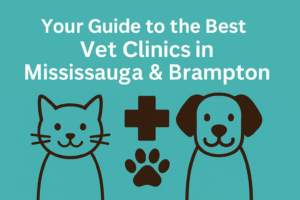It was 2:17 AM when Luna, my normally chatty Siamese, went terrifyingly silent. One moment she was batting a toy mouse; the next, she was hunched in the corner, breathing shallowly. Panic set in. Our regular vet was closed. That’s when I truly understood why Toronto’s 24-hour pet hospitals aren’t just clinics – they’re lifelines woven into the fabric of responsible pet ownership in this city. If you’re reading this, maybe you’re preparing for the unexpected, or perhaps you’re in that awful midnight scramble right now. Having navigated this stress (more times than I’d like to admit), here’s what actually happens when you walk through those doors.
Table of Contents
ToggleThe Gut-Wrenching Arrival: More Than Just a Waiting Room
Forget sterile TV medical dramas. Walking into a Toronto 24-hour pet hospital – whether it’s the bustling one near the Lakeshore or the one up near North York – feels intense, immediate, and oddly reassuring. The first person you meet is usually a triage technician whose eyes instantly assess your pet. This isn’t first come, first served. It’s about urgency:
- “Code Red” Cases (They Go NOW): If your pet can’t breathe, is unconscious, seizing, or bleeding uncontrollably? They’re whisked back before you finish saying “She ate chocolate!”. Staff move with a calm urgency that’s both frightening and comforting.
- “Code Yellow” (Serious, Stable-ish): This was Luna’s category – severe vomiting, painful limping, sudden lethargy. Expect a wait, but usually under an hour. They’ll often offer preliminary pain relief while you wait.
- “Code Green” (Urgent but Not Critical): Things like minor wounds, ear infections flaring up at night, or a skipped meal. You will wait longer, especially on weekends or holidays. Bring a book and a charger.
Pro Tip From Experience: Call ahead if you can. Seriously. Dialling a 24-hour pet hospital Toronto facility like the Toronto Animal Health Partners (South) or VEC Toronto while en route lets them prepare. I once gave a 5-minute heads-up about suspected rat bait ingestion, and they had the induction meds ready when we arrived. It shaved off critical minutes.
Beyond the Doors: What’s Really Happening Back There?
When they take your pet to the treatment area, it’s easy to feel helpless. Knowing what’s likely happening helps. Modern Toronto emergency hospitals function like miniature human ICUs:
- The Tech Arsenal: We’re not talking about basic stethoscopes. Places like the emergency vet hospital Mississauga residents rely on (say, the Mississauga Oakville Veterinary Emergency Hospital) or downtown Toronto’s VEC have in-house blood analyzers giving results in 15 minutes, digital X-rays, ultrasound machines, and sometimes even CT scanners. That rapid diagnosis? It relies on this tech.
- The Critical Care Ballet: Oxygen cages for struggling breathers, IV fluid pumps precisely calibrated, ECG monitors tracing every heartbeat – it’s intensive care for fur babies. Seeing it firsthand during a tour of one facility changed my perspective on the cost.
- The Specialist Safety Net: What if it’s more than an emergency? Many Toronto 24-hour hospitals have specialists (surgeons, internists, cardiologists) either on-site or on immediate call. When my friend’s Dachshund herniated a disc at midnight, the on-call neurologist was there within 30 minutes at VEC Toronto. This integration is gold.
Your Emergency Kit: What You Actually Need to Bring (Beyond Your Pet)
Based on frantic searches through my own kitchen drawer at 1 AM:
- Medication & Food Info: Not just names – doses and when they were last given. A photo of the label works. Mix-ups can happen under stress.
- Your Regular Vet’s Details: Name, clinic, phone number. The ER will usually fax/email them records in the morning.
- A Brief Symptom Timeline: “Started vomiting at 10 PM, 4 times, yellow foam. Ate dinner normally at 6 PM. Found chewed headphones at 9 PM.” Factual, concise. Write it down while waiting if you’re flustered.
- A Comfort Item: That ratty blanket your dog loves? Bring it. Familiar smells reduce pet anxiety (and yours too).
- Payment Options – Be Prepared: This is the tough part. Have your credit card, pet insurance details (know your deductible!), or options like Scratchpay/CareCredit ready. Expect an initial deposit ($250-$1000+ depending on severity).
Navigating the Cost Reality (Without Sugarcoating)
Let’s be honest: Emergency vet care in Toronto is expensive. It’s 24/7 staffing, million-dollar equipment, and critical interventions. Ballparks from recent experiences (2024):
- Initial Exam/Triage: $150 – $250
- Basic Diagnostics (Bloodwork, 1-2 X-rays): $400 – $800
- Overnight Hospitalization with Supportive Care: $1,200 – $2,500+
- Complex Surgery (e.g., Bloat, Major Trauma): $3,500 – $8,000+
How Torontonians Manage:
- Pet Insurance is a Lifesaver: Companies like Trupanion (who often pay vets directly) or Pets Plus Us significantly ease the burden. Get it before the emergency.
- Payment Plans: Many hospitals, including key emergency vet hospital Mississauga options and Toronto ERs, offer CareCredit (interest-free periods exist) or other plans. Ask upfront.
- Charities (Rare but Exist): Organizations like the Farley Foundation assist qualified low-income owners. Apply isn’t instant, though.
The Most Common Midnight Crises Toronto ERs Face (What They Actually See)
- “Blocked Tomcats”: Male cats straining painfully in the litter box. This is a TRUE 24-HOUR EMERGENCY. Can be fatal fast. Requires immediate catheterization.
- “I Ate What?!”: Chocolate, raisins, lilies (cat owners, BEWARE!), human meds, xylitol gum. Don’t induce vomiting unless instructed! Speed matters – bring the packaging.
- Trauma: Hit-by-car (even “just a bump” – internal injuries hide), dog fights, falls from windows (yes, even cats in high-rises). Requires immediate imaging.
- Bloat (GDV) in Big Dogs: Deep-chested breeds (Great Danes, Weims, Standard Poodles). A swollen, hard belly and unproductive retching means GO NOW. Minutes count for survival.
- Severe Vomiting/Diarrhea: Especially in puppies (parvo risk is real here) or small pets, dehydration sets in dangerously fast.
After the Storm: Going Home or the Long Haul
- Discharge: You’ll get detailed instructions – often a small novel! Ask questions. Clarify medication times. Ensure you have a 24-hour contact number for them if you panic later.
- Hospitalization: If your pet stays expect calls 1-2 times daily with updates. Don’t hesitate to call for reassurance. Visiting policies vary.
- Follow-Up: Coordinate closely with your regular vet. The ER will send records, but a call from you helps bridge the gap. Some conditions need ongoing care.
Proactive Steps Every GTA Pet Owner Should Take (Trust Me!)
- Pet-Proof Relentlessly: Lilies out of the house. Trash secured. Human meds locked up. Sugar-free anything (gum, candy) is toxic.
- Know Your Nearest ER Before Crisis: Save the number and address of your closest 24-hour pet hospital Toronto location and a backup (like an emergency vet hospital in Mississauga if you’re near the border) in your phone contacts. Right now. Do it.
- Vaccinate & Prevent: Parvo exists in Toronto parks. Leptospirosis is in puddles. Keep core vaccines updated. Use monthly preventatives for fleas/ticks/heartworm – anemia or tick paralysis land pets in the ER.
- Consider a Pet First Aid Kit & Course: The Red Cross offers them. Knowing basic CPR or how to muzzle-wrap can buy time en route.
The Emotional Toll: It’s Okay to Not Be Okay
Seeing your beloved pet in crisis is traumatic. The staff at these hospitals get it. They’ve seen every shade of panic and grief. Don’t feel guilty for asking questions, needing clarification, or even crying. Good ERs prioritize transparent communication about prognosis and costs before major procedures. If something feels off, ask. You are your pet’s advocate.
Mississauga Pet Parents: You’re Covered Too
While Toronto boasts several excellent options, residents west of the city rely on dedicated facilities like the Mississauga Oakville Veterinary Emergency Hospital (MOVEH). They offer the same level of intensive 24/7 care, advanced diagnostics, and specialist access as top Toronto hospitals. Always confirm a facility is truly 24/7 with in-house staff (not just an answering service) and has the capability for critical care overnight.
The Ultimate Takeaway: Preparedness is Peace of Mind
Finding a 24-hour pet hospital in Toronto (or emergency vet hospital in Mississauga) you trust isn’t just about geography. It’s about knowing that when Luna stops breathing, or your retriever bloats or your kitten chews an electrical cord, there’s a team of skilled, compassionate professionals ready with the technology and expertise to fight for them. Do your homework now. Save those numbers. Talk to your vet about their recommended ER. It transforms that 2:17 AM panic into focused action – giving your furry family member the best shot at coming home.
Because in the heartbeat of an emergency, Toronto and Mississauga’s 24-hour pet hospitals are the bridge between terror and hope.




